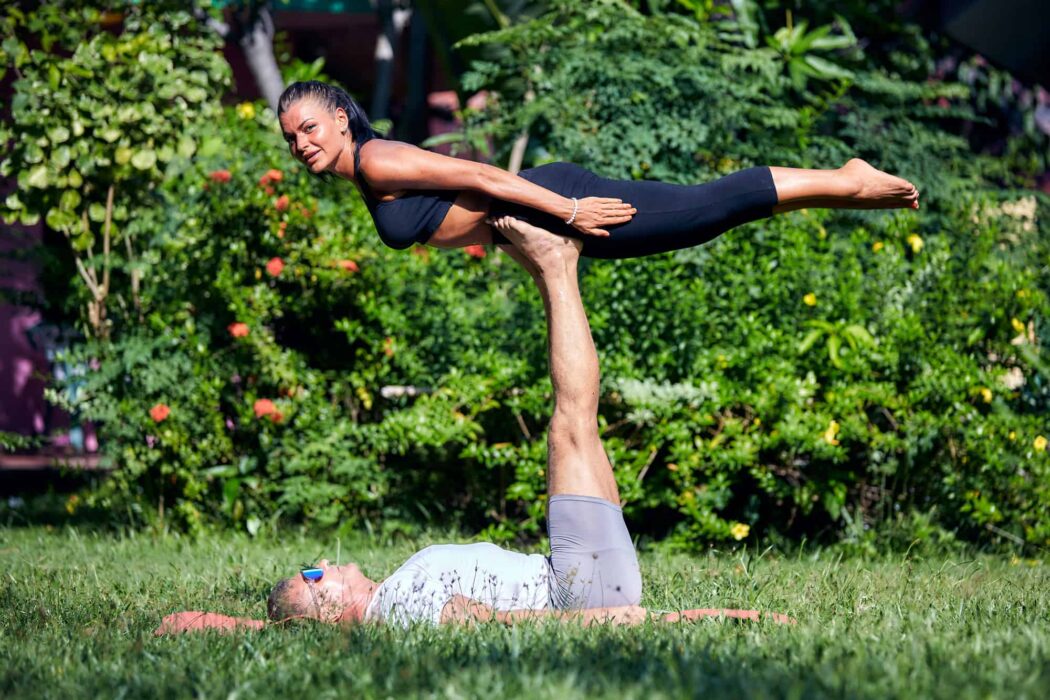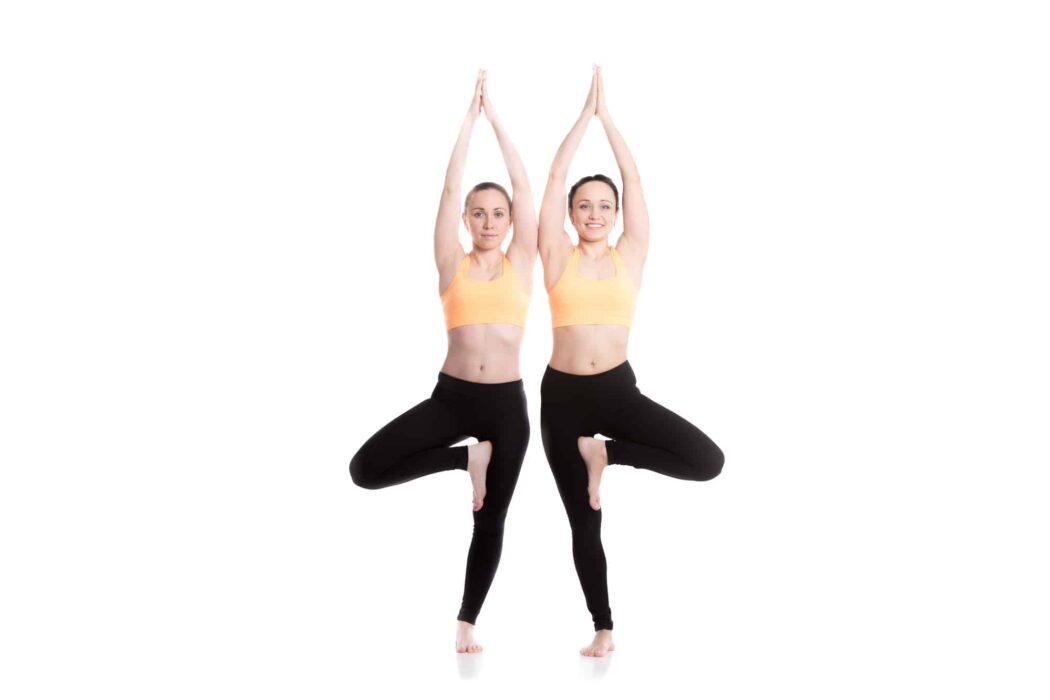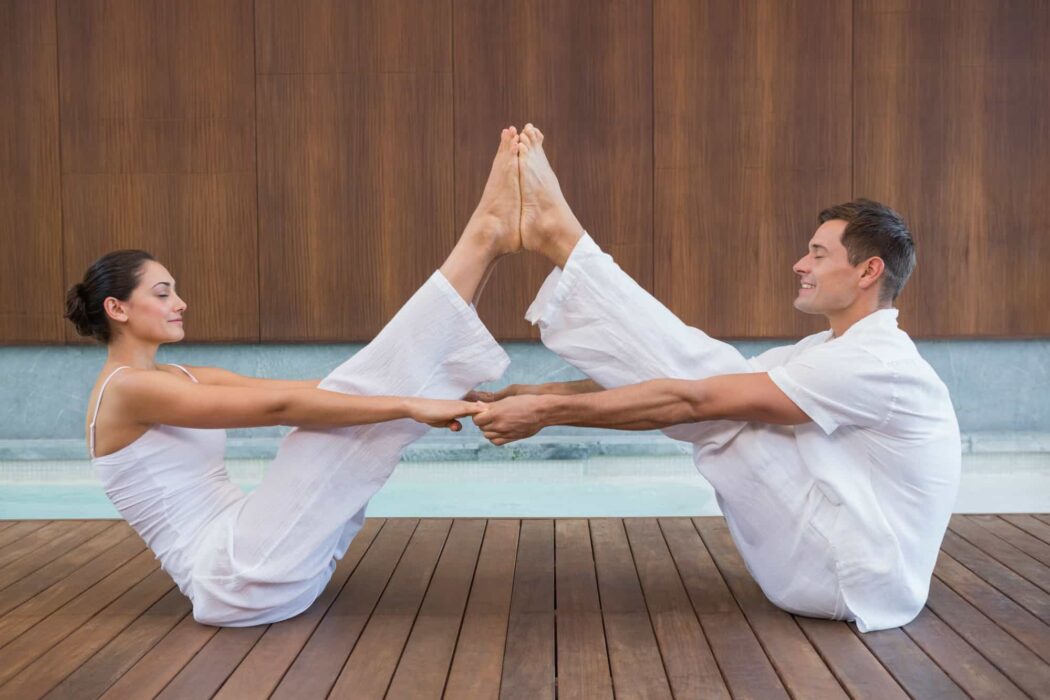Traditional Yoga practitioners have propagated Yoga as a fitness regime that has to be practiced alone. Still, not all yoga postures and stretches are easy to do when you’re alone. But when done with a partner, they can be performed easily.
One reason behind this is the physical support and the other is dependability and trust that you develop with your partner while practicing these postures. They are:
The concept of Yoga for two or couples yoga is a relatively new variation. Yoga sessions meant for two are more enjoyable and engaging for the practitioners and give you not only physical benefits but are effective to improve your relationships with a partner. So, let’s check how can you do some yoga for two people today.
Benefits of Yoga for Two People
Yoga helps to build muscle strength, relaxes and cures our body, facilitates better blood circulation and oxygen supply. Plus, it helps us to find inner peace and tranquility. And all these boons of Yoga multiply if we do it with a partner.
When you practice together, slowly, you get to learn about your physical limitations as well as that of your partner. Accordingly, you can support and motivate each other.
When you do yoga for two, be upfront about letting your partner and instructor know about any injury or medical condition that you might be dealing with. This will help to set an expectation and help avoid injuries while performing the exercise.
TIP: Remember to always start your yoga for two sessions with some warmup exercise such as spot jogging or a few rounds of Sun salutation. This will wake up your muscles and pump up the blood flow all over your body.
Yoga Poses for Two
When you think to try yoga for a couple, it’s better don’t start from poses like the below one:

We’ll offer you to start with some of the yoga poses that are accessible for all couples wanting to do yoga. So grab your mat and a partner and prepare to practice a truly revitalizing yoga session for two.
-
Vrikshasana/ Tree Pose
Though considered as a beginner’s posture, it is often quite a challenge for practitioners to find a proper balance on one leg. Often practitioners use the support of the wall. However, in presence of a partner, Vrikshasana can be practiced with the help of the partner.

Balancing yoga postures, such as Vrikshasana, have numerous benefits. Tree pose helps to attain better control over our bodies and also enhances our ability to focus. And performing it with a partner helps to reap the benefits of the posture and gradually gain the confidence to practice it independently.
-
Halasana/ Plow Pose
Halasana is performed by lying down on the back with both hands lying close to the body facing the ground. Then, lifting both legs and take it over the head to touch the ground on the other side while keeping the hands and the shoulders rooted to their prior position on the ground.
Halasana is a challenging posture for solo practitioners and requires years of practice before they can strike the pose properly without hurting themselves. However, when performed with a partner, it can be done with more confidence and ease.
Both the partners can start the pose with their legs raised to Ardha Halasana with their legs raised with the back of their legs facing each other. Then they can hold each other’s hands as they take their legs over their head to touch the ground. Like this, they save themselves from injuring their shoulders or spinal cords.
-
Navasana / Boat Pose
Naukasana (Navasana) or boat pose is incredibly beneficial for the core muscles. If you really want to get rid of that belly fat, nothing beats boat pose. Having said that, it is truly challenging to get the correct posture and the right balance.

The boat pose requires you to sit upright with your spine straight and the legs bend at your knees. Then you slowly recline your spine back and straighten your legs to form a V-shape with your body. After that, you stretch your arms straight in front of you. In this posture, your body is balancing on your tailbone. If anything goes wrong, you are at the risk of hurting your tailbone.
5 Simple Boat Pose Variations for Perfect Abs
However, if you perform this pose with your partner, both of you can sit facing each other and hold your hands to support each other.
-
Forward and Back Bend
Forward and backbends are essential for flexibility and deep stretching. However, when performed alone, practitioners often tend to leave it mid-way. But, if you have someone to pull or push you, you could even map those few extra inches beyond your comfort limit.

In this one partner can do a forward bend while the other can perform a backbend. It starts with both the partners sitting back to back with each other. Then as one partner bends forward, he/ she pulls the hands of the other partner who slowly lifts his/her buttocks off the ground and arches on the partner’s back while keeping his/ her feet rooted to the ground.
They can repeat the same on the other side. In this way, the forward bending partner gets pushed by the backward bending partner to get the maximum stretch on his/ her torso and arms, while the latter stretches his/ her spine to an optimum level.
-
Standing Backbend
Standing backbends are extremely beneficial for your spinal cord and back muscles. You can also feel the stretch in your abdomen and thigh muscles as your strike the pose.
Standing backbends can be performed by placing the hands on the sides of your hip or raising the hands over the head. However, for an easier and more rounded stretch, you can hold your partners’ arms and you stand facing each other. Like this, as you bend backward, you can arch with aplomb as you find support from your partner.
7 Best Core Exercises to Build Strength at Home
Thus, we come to an end of five challenging yoga postures that can be made easy by performing with a partner. A companion always makes tough jobs easier and fun. And when it comes to the most beneficial exercise regime like yoga, it is all the more inspiring to get on to the mat.